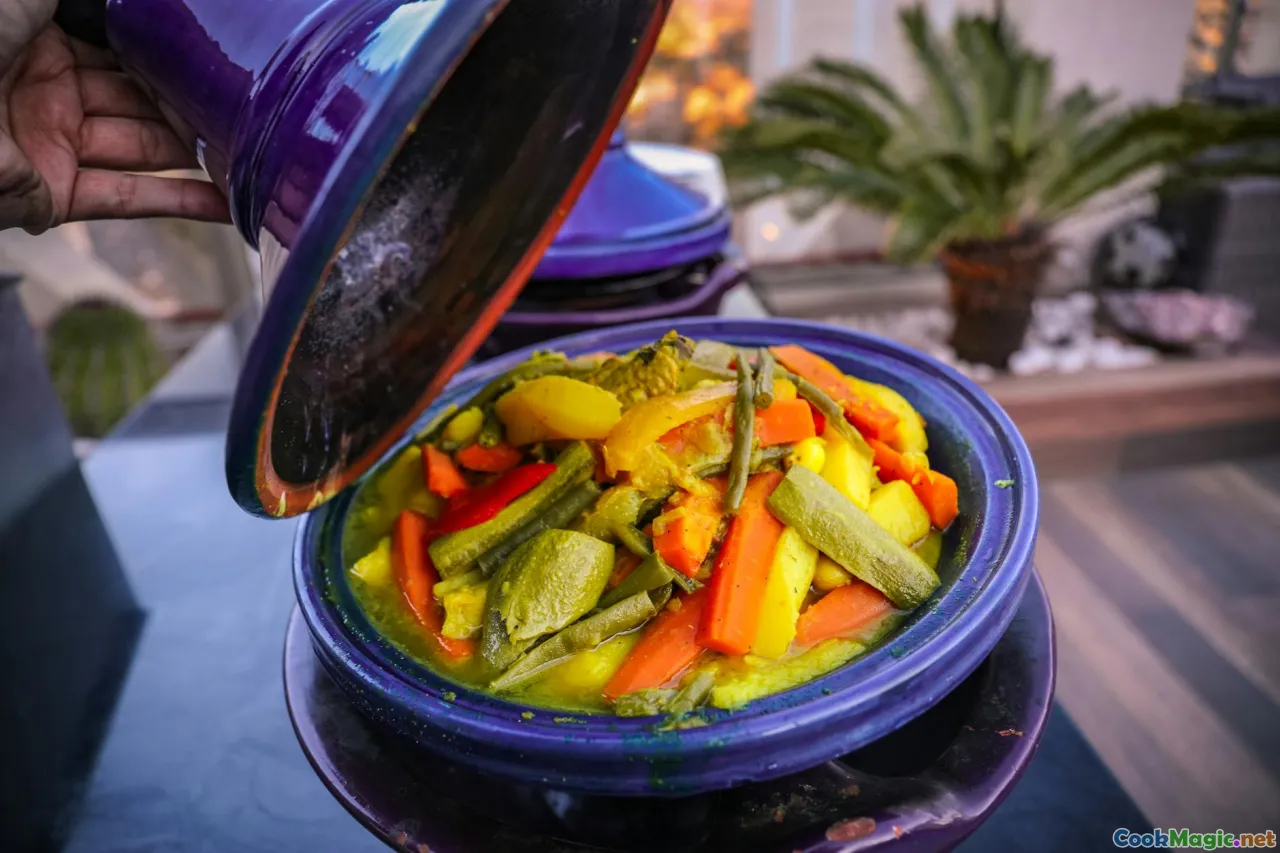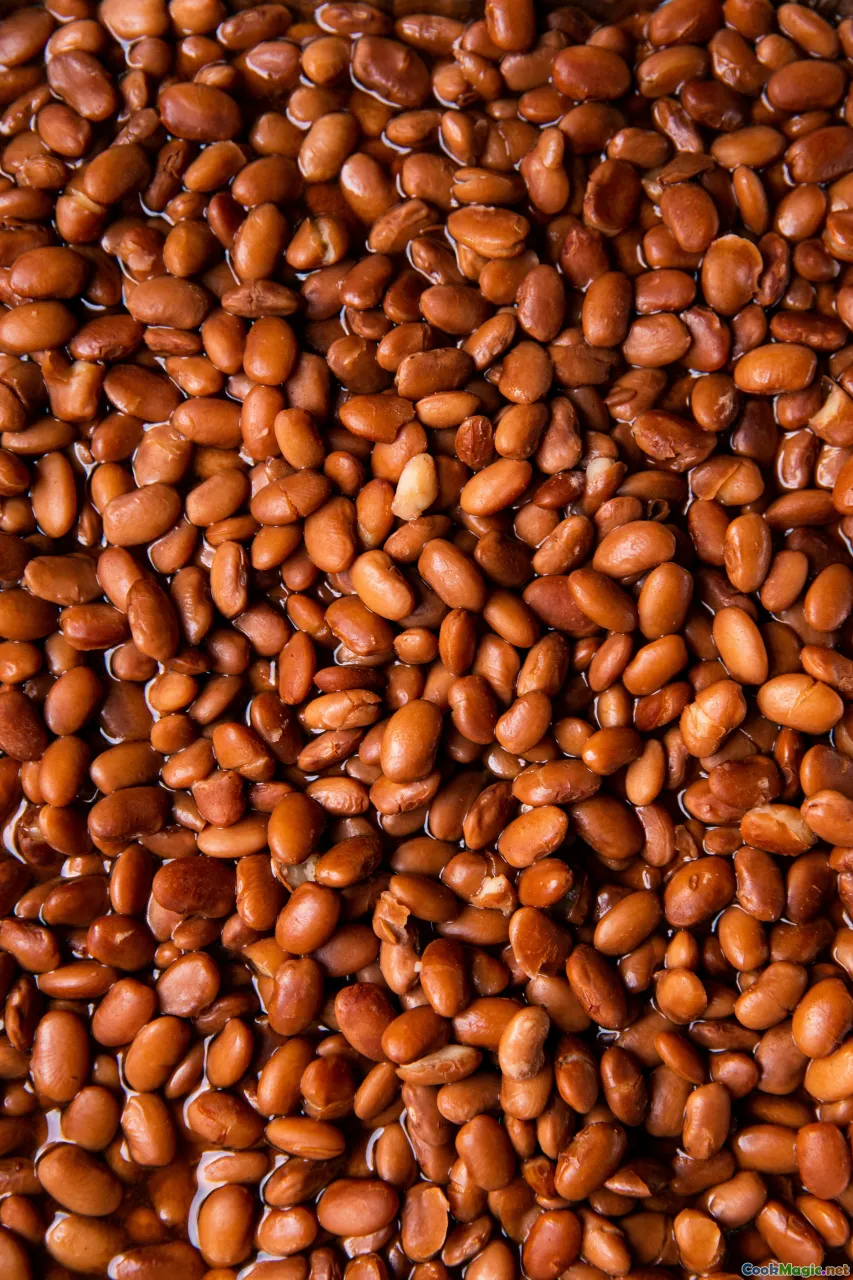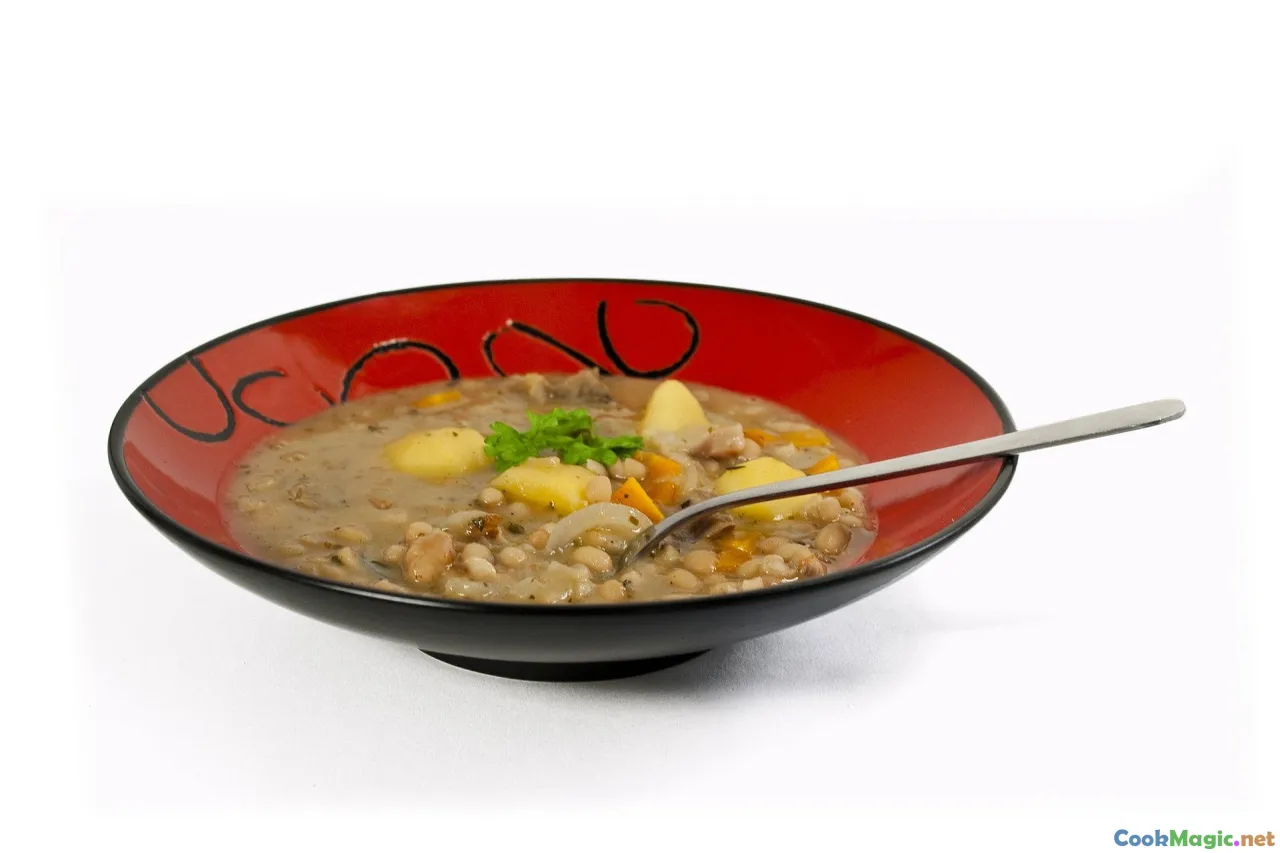
Món hầm Xhosa Samp & Đậu ấm áp
(Hearty Xhosa Samp & Bean Pot Stew)
(0 Đánh giá)0
385
tháng 10 06, 2025
Báo cáo sự cố
Nguyên liệu
-
250 grams Ngô khô (ngô hominy)
(Soak overnight for best texture)
-
150 grams Đậu đường khô
(Kidney beans can be substituted)
-
1 large Hành vàng
(Finely chopped for sweetness)
-
2 medium Cà rốt
(Bóc vỏ và cắt hạt lựu)
-
1 large Khoai tây
(Diced; adds creaminess)
-
1.2 liters Nước dùng rau củ
(Chicken stock can be substituted for non-vegetarians)
-
100 grams Bắp cải
(Shredded, adds lightness)
-
2 tbsp Nước sốt cà chua
(Gives color and acidity)
-
2 cloves Tỏi tây
(Băm)
-
1 tbsp dầu hướng dương
(Để xào)
-
1 tsp Muối
(Điều chỉnh theo khẩu vị)
-
0.5 tsp Hạt tiêu đen
(Xay mịn tươi)
-
1 tbsp Ngò tươi
(Băm nhỏ, để trang trí)
(Soak overnight for best texture)
(Kidney beans can be substituted)
(Finely chopped for sweetness)
(Bóc vỏ và cắt hạt lựu)
(Diced; adds creaminess)
(Chicken stock can be substituted for non-vegetarians)
(Shredded, adds lightness)
(Gives color and acidity)
(Băm)
(Để xào)
(Điều chỉnh theo khẩu vị)
(Xay mịn tươi)
(Băm nhỏ, để trang trí)
Dinh dưỡng
- Khẩu phần: 4
- Kích thước khẩu phần: 1 bát (300g)
- Calories: 359 kcal
- Carbohydrates: 60 g
- Protein: 13 g
- Fat: 4 g
- Fiber: 15 g
- Sugar: 6 g
- Sodium: 1024 mg
- Cholesterol: 0 mg
- Calcium: 78 mg
- Iron: 4 mg
Hướng dẫn
-
1 - Prepare Samp and Beans:
Soak the samp and beans in plenty of cold water overnight. Drain and rinse before cooking.
-
2 - Sauté Aromatics:
Heat sunflower oil in a heavy pot over medium heat. Sauté onions until translucent, then add garlic and tomato paste; cook for 2 more minutes.
-
3 - Add Vegetables:
Stir in carrots and potatoes, coating them with aromatic mixture for uniform flavor.
-
4 - Simmer Samp and Beans:
Add soaked samp and beans to the pot. Pour in vegetable stock, bring to simmer, cover, and cook on low heat for about 2 hours or until everything becomes tender.
-
5 - Final Addition & Seasoning:
Add shredded cabbage (if using). Continue simmerring 10–15 minutes, then season with salt and pepper. Adjust seasonings as needed.
-
6 - Garnish & Serve:
Serve the samp & bean pot hot, garnished with fresh parsley for an added touch of color and freshness.
Soak the samp and beans in plenty of cold water overnight. Drain and rinse before cooking.
Heat sunflower oil in a heavy pot over medium heat. Sauté onions until translucent, then add garlic and tomato paste; cook for 2 more minutes.
Stir in carrots and potatoes, coating them with aromatic mixture for uniform flavor.
Add soaked samp and beans to the pot. Pour in vegetable stock, bring to simmer, cover, and cook on low heat for about 2 hours or until everything becomes tender.
Add shredded cabbage (if using). Continue simmerring 10–15 minutes, then season with salt and pepper. Adjust seasonings as needed.
Serve the samp & bean pot hot, garnished with fresh parsley for an added touch of color and freshness.
Thông tin thêm về: Món hầm Xhosa Samp & Đậu ấm áp
Xhosa Samp & Bean Pot: A Taste of Eastern Cape Heritage
The Xhosa Samp & Bean Pot—known as umngqusho in isiXhosa—is not just a perennial comfort food but a beloved staple at the South African table, especially throughout the Eastern Cape. This dish’s roots run deep in Xhosa tradition, its recipe passed lovingly from one generation to the next. Whether shared around family gatherings, commemorations, or festive rural settings, the samp and bean pot is always heart-warming, robust, and packed with nourishment for both body and spirit.
The Precious Ingredients & Their Stories
Samp (maize kernels broken through milling until partially ground, somewhat between hominy and grits) and sugar beans are at the heart of this dish. They showcase ingredients native to southern Africa and adapted over time—maize being introduced only after the Columbian exchange. Interestingly, the act of soaking samp and beans is both a time-honored process and an essential step to soften dry ingredients, yielding their rich, creamy textures after a long, slow cook.
Though traditionally cooked with the simplest of additions—salt, potatoes, onion—modern recipes often incorporate carrots, cabbage (especially in winter months), and even tomato paste to lend a balancing tang. In rural Xhosa kitchens, a wood fire was preferred, the pot left to bubble slowly for hours, filling homes with a subtle, satisfying fragrance.
Cooking Notes & Tips for a Perfect Pot
- Soaking is Critical: Never bypass the overnight soak. It dramatically shortens cooking time and improves both nutritional absorption and texture.
- Adapt Ingredients: Sugar beans impart a lovely, hearty flavor, but if unavailable, use red or kidney beans. Customize the vegetable blend by adding diced butternut squash or spinner with a hand blend for an ultra-creamy base.
- Depth of Flavor: Swapping vegetable stock for chicken or beef (if you’re non-vegetarian) can yield a richer taste.
- Serve It Up: In traditional settings, samp and beans are served as a stand-alone meal or paired with meaty stews (think stewed beef, ox-tail, or chicken) or tangy, fermented amasi (South African cultured milk) for the ultimate cultural pairing.
- Texture Fix: The consistency should be ‘slump-and-spoon’, thick enough to be heartening but not dry; simply add more stock or hot water if too thick.
Cultural and Historical Resonance
The dish’s social impact surpasses mere sustenance. Umngqusho is not only prevalent at celebratory feasts—from weddings to umgidi (initiation) ceremonies—but is also associated with resilience and family identity. Through apartheid-era deprivation, it remained affordable and nutritious food, accessible even in the harshest times. Its popularity and adaptability helped maintain food security while upholding ceremonial customs.
Efforts by South African cooks today have elevated the humble samp & beans to city restaurant menus, reimagined with local herbs, or decentralized into vegan-friendly staple for urban home cooks. Not only does the pot symbolize sustenance, but it also speaks of unity—many a communal pot is brought to the fire, the dish ladled family-style, shared, and celebrated.
Personal Thoughts & Unique Aspects
Whenever I make a Xhosa Samp & Bean Pot, I’m captivated by this duality between the communal and the individual—simple ingredients, robust flavors, and the unpretentious power of slow food. Particularly joyous is eating it on cold nights, topped with chopped parsley, with stories told around the dinner table. If there’s any leftover, it thickens nicely overnight and is amenable to reheating, becoming even richer the next day.
Whether you choose to keep the recipe purely traditional or riff with root vegetables, try embracing this rich culinary tradition. Let the gentle bubbling on the stove invite loved ones closer, turning the modest bean and maize pot into an emblem of South African warmth!

























